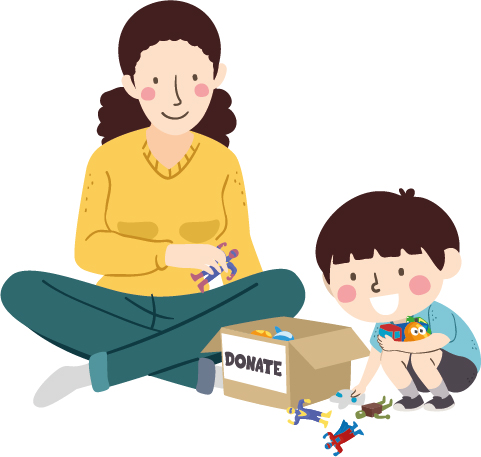Charity begins at home. That’s how the saying goes. As such, charitable acts too, begin at home as children observe the adults around them on a daily basis. When considering charity and charitable acts, it is important to remember that one does not have to be rich to be charitable. For although charity is often associated with giving money, it is also the quality of being kind to others and not judging them in a severe way. Not being able to donate money does not mean one cannot still be charitable. This is the first message to teach our children.
How to instil charitable thoughts in our children?
The best way is to lead by example, for children learn through observation. Start with simple acts of kindness, like smiling and saying thank you to others. Instead of making fun of others in their presence, find for and talk about the good traits. Empathise rather than criticise. All too often, we mock and demean without actually meaning to do so, and these habits are witnessed and repeated by our children.
Avoid categorising people based on their appearances, nationalities and occupations. Instead, teach children that everyone is equal and should be treated as such, irrespective as to how they look, dress or their level of education. Emphasise less on material wealth and more on kindness. While we need money to live, it is important that we not hinge everything on material wealth and measure success by how much one makes or owns.
The act of giving charity can also be taught from a very young age. While donating to beggars is frowned upon, we can contribute to various causes, many of which are seen from time to time in malls, etc. Take the time to stop by these booths so your child can hear about the causes these organisations champion.
Give generously to your staff and employees. I grew up watching my mother buy a pack of apples for her staff from time to time, as well as sewing frocks with smocking when they had babies, as gifts. In return, I also witnessed her patients help her weave kelongsong ketupat from the leaves she had taken to her clinic in the hope of weaving them in between patients. Imagine her surprise when she found that these ketupat cases were all woven by the end of her work day. Imagine too, the gratitude felt by her staff upon receiving the gifts.
These happened in the 70’s and early 80’s, yet they remain fresh in my mind, 40 years after her demise. That is the impact of my mother’s charitable act on my impressionable child’s mind. No lectures were needed. Just acts of kindness. And proof that what goes around comes around, in the nicest possible way. Our maids were also treated with respect and kindness. We weren’t allowed to order them around. Every request had to be made politely and thanked.
An older child can be exposed to organisations like soup kitchens, which provide food to the homeless. Such exposures will enable them to reflect on their own circumstances and appreciate what they have. While volunteering, they will also learn to be mindful of their words and actions, thus teaching them humility. To avoid any untoward incidents, do brief them on the do’s and don’ts before heading out to the soup kitchens.
In summary, charity and charitable acts can be taught from a very young age, simply by practicing them ourselves. Children learn through observation, and witnessing their parents engage in charity and charitable acts leave a long-lasting impact.







Comments